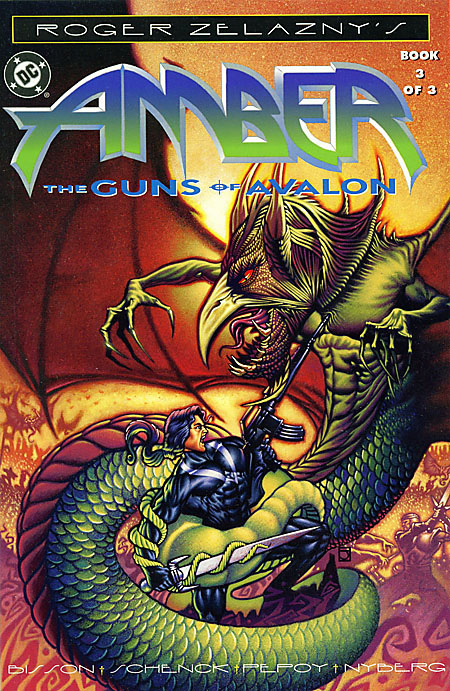The most fun I ever had adapting books to graphic format came from the fact that in every case the original work was one I had read and liked. That was true with Ray Bradbury, whose work I adapted most extensively, from his classic short stories to his classic longer works, like Fahrenheit 451.

I was a huge fan of Roger Zelazny’s AMBER series—a brilliant fantasy world that grew more layered and exciting with each volume. At Byron Preiss’s, I got to adapt Nine Princes in Amber, the foundational work of the series, into three fully-painted graphic novels, followed by a three-part adaptation of the second novel in the series, The Guns of Avalon.

Unfortunately, by that time Roger had already begun to feel the adverse effects of being a long-time chain-smoker. A man who was almost always seen holding a lit cigarette, he made Prince Corwin, the lead character in the series, a smoker as well. But when it came time for the graphic adaptation, Roger had already stopped smoking, although he could not avoid the disease it had caused. Hence, Corwin was no longer a smoker, and neither were any of the book’s other characters.
When I asked Roger about this, he explained that he had never set out to make Corwin a cigarette smoker. Rather, he would sit at his typewriter (yes, an actual typewriter) and, when the story wasn’t flowing or he wasn’t sure of what would happen next in a scene, he would light a cigarette and think about it. And so periodically in Nine Princes you can see where the creative process paused and then picked up again, because Roger invariably had a character (most notably Corwin) light up when he himself did.
The script adaptation by award-winning genre author Terry Bisson was splendid, but the experiment with full-painted pages was frustrating and less rewarding. The production time was way too long—painting is just awfully time-consuming. And it is more of a challenge to create an action sequence, as the artist cannot use “speed lines” or other traditional techniques to move the story action along. And Byron positively freaked when he saw one story sequence, which showed Corwin thrown into a dungeon after his eyes have been plucked out. But, as a Price of Amber, he manages to regenerate them completely. So the scene goes from complete black to a hint of a tone, to some light, to restored vision. Two of the pages were mostly black. Byron looked at them and screamed, “I’m not paying an artist to paint black pages!”
Next time: adapting the work of Harry Harrison and Douglas Adams.